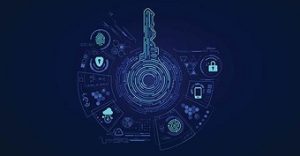
HID Global, the worldwide leader in trusted identity and physical security solutions, outlines and discusses important trends that are set to reshape the security industry in 2022 and beyond. With more than 30 years powering and protecting the physical and digital identities of the world’s people, places and things, HID Global is in a unique position to identify key enablers, disruptive events and game-changing developments that will shape the security landscape in 2022.
By observing the market and listening to partner and customer feedback, HID Global believes the following seven topics will impact the security industry this year and beyond:
Supply Chain Issues: Supply chain issues will continue to be a dominating security trend, making 2022 a year when the industry must get creative. Semiconductor shortages, global logistics bottlenecks, and corresponding cost increases will impact everything from readers and control panels to sensors and detectors.
Sustainability: The past year has demonstrated a growing consensus that end users demand to work with suppliers that make sustainability a cornerstone of their business decisions and operations. In 2022, the focus on sustainability will grow, driving suppliers to increase focus on digital solutions, including end-to-end mobile and multi-application technologies that reduce the industry’s footprint.
SaaS-Delivered Identities: Digital transformation has brought with it a move to cloud deployments and service models, providing opportunities to manage access control for applications, physical assets, and data while new form factors enable seamless, trusted authentication. As digital-first mandates continue to impact the security landscape, 2022 will see SaaS-delivered identities become not just the norm, but the expectation.
Digital IDs: Digital wallet adoption is at an all-time high. Big technology companies are increasing new credential functionality in applications. Enterprises and governments are adding new infrastructure to support digital transactions. In 2022, there will be a tipping point for digital IDs to outpace physical ones, and digital servitisation will play a vital role as suppliers organise around service models and service-led growth.
Future of Work: Hybrid work models are the norm today and a zero trust approach for all is a top trend dominating the security industry in 2022. Leaders tasked with ensuring a safe environment for those returning to the office – and secure identity and access management for those working remotely – are looking to the latest physical access trends and the best practices enabling them. Touchless solutions, data protection, and visitor management technologies are ensuring healthy and secure on-site environments while multi-factor authentication solutions take center stage for remote applications.
Contactless Biometrics: Biometrics are already in widespread use, whether it’s to secure a mobile device, secure a driver’s license or other government ID, or to track fitness. In 2022, biometrics paired with cloud-based identity management solutions is poised to fuel much faster growth. Security’s role in delivering biometric technology that enables secure authentication and protects data privacy is emerging across sectors of the economy.
Data Science: The combination of IoT, cloud and mobile technologies is steadily driving digital transformation across the security industry. Balancing protection against the potential of new physical and digital cyber security threats has moved data science into the spotlight, as discussion turns from risk mitigation and prevention to threat prediction and aversion. In 2022, artificial intelligence (AI) and machine learning (ML) will become more tightly woven into the fabric of trusted identity solutions across the physical and digital continuum, automating and optimising performance, accuracy, safety, and security.
By understanding how each of these developments are forecasted to shape the industry, security professionals will be better prepared to capitalize on breakthrough innovations in solutions and services, ultimately delivering a higher level of security across the physical and digital realms.











